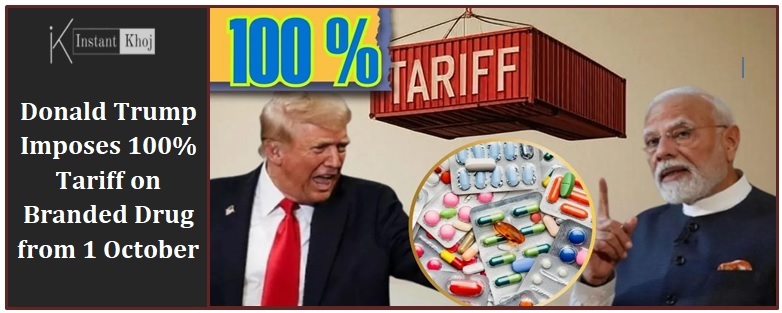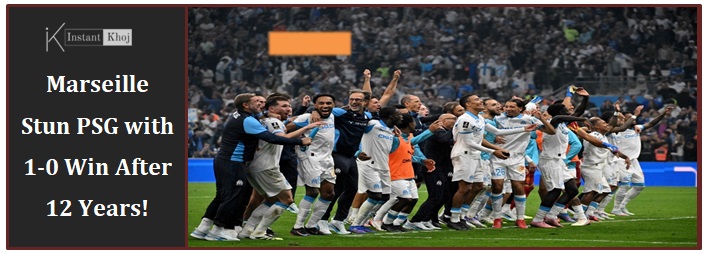Introduction
On September 25, 2025, former U.S. President Donald Trumpannounced that starting October 1, the United States would impose a 100% tariff on imported branded or patented pharmaceutical products. This move marks yet another escalation in trade tensions and poses serious implications for major drug‑exporting nations, notably India. While generics were initially thought to be excluded, the announcement has rattled investor confidence across the Indian pharmaceutical sector.
In this article, we explore the genesis of this policy, its likely consequences for Indian pharma, how companies and the government may respond, and what it means for global drug supply and patients. We also include a FAQ section at the end to clarify common doubts.
Background — Why the Tariff?
Trump’s “Reciprocal Tariff” Strategy
This 100% duty is part of Trump’s broader “reciprocal tariff” push — the idea that the U.S. should impose matching tariffs on imports from countries that maintain high tariffs on American goods.Trump has referred to pharmaceuticals as a sector that would be targeted to stimulate domestic production and reduce reliance on foreign manufacturers.
Scope and Exemptions
The announced tariff reportedly applies to branded / patented drugs, rather than plain generics. Some exemptions may apply for companies actively investing in U.S.-based manufacturing. However, details remain murky, and enforcement and definition of “branded vs generic” will matter.
India’s Pharma Exports to the U.S. — Why It Matters
Export Volumes & Market Share
India is a powerhouse in global generics and pharmaceutical exports. It supplies a significant chunk of the U.S. generics market. In FY24, Indian exports to the U.S. were approximately US $8.7 billion. Indian pharma is estimated to supply 4 out of 10 prescriptions dispensed in the U.S. at generic level.
Margins, Cost Structure & Vulnerability
Indian generic producers often operate on razor-thin margins. Even a moderate tariff could erode competitiveness or force price adjustments. Further, compliance with U.S. FDA norms, logistics, and regulatory audits already add cost burdens which leave less buffer for external shocks.
Stock Market Reaction
Unsurprisingly, Indian pharma stocks reacted swiftly. On the day of the announcement, all 20 constituents of the Indian pharma index dropped around 2.6% on average. Large players like Sun Pharma were down ~3.4%.
Key Impacts on Indian Pharma
Profitability Compression & Pricing Pressure
The direct effect of a 100% tariff is that Indian branded drugs entering the U.S. market could have their landed cost effectively doubled. Indian manufacturers must choose whether to absorb the tariff (unlikely, given low margin) or pass it on to buyers—leading to reduced demand or loss of market share.
Reevaluation of Product Mix
Since generics appear to be outside the immediate scope, Indian firms may intensify focus on generics, biosimilars, over-the-counter (OTC) segments, and specialty generics. They may deprioritize high-margin patented lines destined for the U.S. $$ market.
Supply Chain Restructuring & Local Manufacturing
To mitigate tariffs, Indian pharma giants may seek to set up or expand manufacturing units inside the U.S. or partner with local contract manufacturers. Some firms already operate U.S.-based facilities (or have stakes) and may ramp them further to shield key products from tariff exposure.
Diversification of Export Destinations
With the U.S. becoming riskier, Indian pharma companies may aggressively pivot toward other large markets: Latin America, Africa, Southeast Asia, Middle East, and Japan. That shift will take time but is essential.
Regulatory & Diplomatic Pushback
India’s government and trade bodies (like Pharmexcil, Indian Pharmaceutical Alliance) will likely lobby for exemptions, negotiate bilateral trade terms, or bring the issue up at WTO or bilateral forums.
Global Drug Price and Supply Effects
Because Indian generics help keep drug prices lower globally, a tariff shock could ripple into the U.S. health system, raising prices or shortening supply. For niche or specialty drugs that have limited alternate sources, patients may see delays or shortages.
Mitigation Strategies & Industry Response
Government & Trade Diplomacy
-
The Indian government may negotiate carve-outs or exceptions for life-saving drugs.
-
Use diplomatic channels, engage WTO dispute resolution, or invoke trade agreements.
-
Offer incentives for U.S. manufacturing tie-ups of Indian firms.
Industry Measures
-
Fast-track plans to launch U.S.-based manufacturing or acquisitions.
-
Shift more R&D and new drug development toward markets less exposed to U.S. tariffs.
-
Seek cost synergies, backward integration (APIs, key starting materials) to reduce dependency.
-
Rebalance revenue weightage — lower reliance on the U.S. market.
Investor & Underwriting Caution
Analysts and investors may demand higher risk premiums for pharma ventures exposed to the U.S. A portion of U.S.-facing assets might get revalued or written off if tariffs severely hamper revenue.
Competitive Advantage Play
Some Indian firms with existing U.S. footprints or capacity to scale could gain market share if weaker players are squeezed out. Those that can navigate the tariff shock may emerge stronger in the long run.
Risks, Challenges & Uncertainties
-
Ambiguity in Scope: It is not yet entirely clear which drugs or formulations qualify as “branded” under this tariff.
-
Enforcement & Evasion: Customs classification disputes, regulatory rulings, and litigation may arise.
-
Time Lag & Transition Risk: Building U.S. production or shifting supply chains takes years, not months.
-
Retaliation or Backlash: U.S. policy changes, pressure from stakeholders, or judicial challenges could force reversal.
-
Patient & Health System Pushback: In the U.S., sudden price increases or supply constraints could trigger pushback from insurers, hospitals, and patient advocacy groups.
-
Global Trade Fallout: Other drug-exporting nations may retaliate or adopt protectionist policies, destabilizing the international pharma balance.
What This Means for Patients & Health Systems
Patients in the U.S. could experience higher drug prices—especially for specialty or branded drugs. Generic medicines, often subsidized or covered by insurance, may face price pressure. In worst-case scenarios, supply disruptions could lead to temporary shortages, especially for less profitable drugs.
In India and other exporting nations, the immediate impact is more on pharmaceutical companies and trade balances. But over time, changes in global flows could influence local drug research, regulatory priorities, and even public health strategies.
Conclusion
The imposition of a 100% tariff on branded pharmaceutical imports by the U.S., effective October 1, 2025, is a disruptive event with potentially wide-ranging consequences. For Indian pharma, the stakes are high: compressed margins, revenue risks, realignment of supply chains, and diplomatic battles. But this shock also accelerates decisions on U.S. manufacturing, product mix reorientation, and export diversification.
The path ahead is fraught with uncertainty, but nimble firms and proactive government diplomacy can soften the blow. What remains clear is that the global pharmaceutical landscape is entering a period of recalibration — one that may permanently shift supply chains, market dependencies, and competitive hierarchies.
Frequently Asked Questions (FAQ)
Q1: Does the tariff apply to generic drugs or only branded/phased‑out patented ones?
A1: The announced 100% tariff is said to target branded / patented drugs. Generics are reported to be excluded, at least in the initial policy framework. Still, the final legal text and customs interpretation may challenge that distinction.
Q2: Will this tariff immediately double the cost of Indian branded drugs in the U.S.?
A2: In principle, yes — a 100% tariff means the import duty doubles the landed cost. But in reality, firms may negotiate discounts, absorb some cost, or adjust pricing. The final impact depends on market dynamics, competition, and regulatory flexibility.
Q3: How much of Indian pharma exports currently go to the U.S.?
A3: Estimates suggest that between 30% and 40% of India’s pharmaceutical exports are destined for the U.S. market.
Q4: Could this tariff hike lead to drug shortages or higher costs for U.S. patients?
A4: Yes, especially for niche branded drugs with few alternative suppliers. Price hikes and supply disruptions are possible, which could translate into higher costs for patients or insurance payers.
Q5: How can Indian pharma companies defend themselves?
A5: Possible strategies include shifting production to U.S. facilities, diversifying export markets, focusing more on generics and biosimilars, backward integration in API supply, and aggressive diplomatic engagement.
Q6: Will the Indian government fight back?
A6: Yes. The government is expected to pursue diplomatic negotiations, engage trade bodies like WTO, seek carve-outs for essential drugs, and possibly retaliate in select sectors.
Q7: What is the timeline for seeing the impact?
A7: Some effects (stock reaction, investor sentiment) are already visible. But deep structural shifts (U.S. manufacturing, supply chain realignment) will take months to years.
Also Read:
H-1B Visa Rules Changed! Here’s What Trump Plans!
UAE Bans Work & Tourist Visas for 9 Countries in 2025
FollowCurrent AffairsonInstantkhoj for more latest stories and trending topics.




